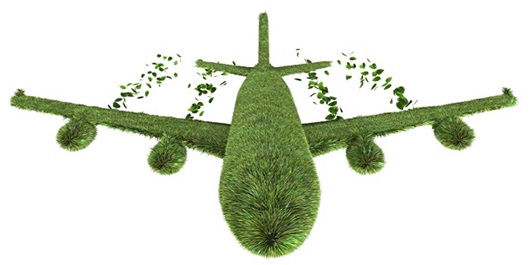Alternative Fuels in National Air Transport
DOI:
https://doi.org/10.18667/cienciaypoderaereo.643Keywords:
aviation, biofuels, polluting emissions.Abstract
Today, the high demand of passengers in the different airports of the country, the growth, consolidation and birth of airlines, along with the need to find a substitute for fossil fuels that is also friendly to the environment, have strengthened the study, implementation, use and optimization of alternative fuels in the aviation sector. Despite the fact that not many or major advances have been achieved in the aviation industry, the implementation of new energy sources has been an issue repeatedly evaluated over the years. Thus the need to address the current state of the use of new energies, specifically in the national air sector, considering that Colombia has shown great potential for the production of biofuels from sugar cane and oil palm crops, which have begun to be used for the operation of alternative internal combustion engines (gasoline and diesel). The bibliographic review presented in this work allows stating that despite the limited attempts to demonstrate the advantages of the use of alternative fuels in national aviation results on this regard have proved satisfactory, which promotes the development and use of these new sources of energy in Colombia.
Downloads
References
A39-WP/55, O. d. (11 de Octubre de 2017). TENDENCIAS PRESENTES Y FUTURAS RESPECTO AL RUIDO. Recuperado el 14 de Septiembre de 2018, de https://www.icao.int/Meetings/a39/Documents/WP/wp_055_es.pdf
AERONAUTICA CIVIL DE COLOMBIA. (14 de Julio de 2019). Obtenido de http://www.aerocivil.gov.co/atencion/estadisticas-de-las-actividades-aeronauticas/Paginas/default.aspx
Aeronoticias. (2012). Fedebiocombustibles. Obtenido de https://www.fedebiocombustibles.com/nota-web-id-1051.htm
Aviacion Terpel. (10 de Julio de 2019). Obtenido de https://www.terpel.com/en/home-Productos-y-Servicios/Aviacion/Aviacion-Terpel/
AVIANCA INFORME ANUAL 2018. (2019). Obtenido de http://www.aviancainvestors.com/content/dam/inversionistas/relacion-con-inversionistas/informacion-financiera/informe-anual/informe-anual-avianca-holdings-2018.pdf
Boeing. (2011). Fedebiocombustibles. Obtenido de https://www.fedebiocombustibles.com/nota-web-id-1892.htm
China, S. (2013). Obtenido de Fedebiocombustibles: https://www.fedebiocombustibles.com/nota-web-id-1685.htm
Fedebiocombustibles. (2016). Biocombustibles para la aviación podrían ser competitivos en menos de una década. Obtenido de https://www.fedebiocombustibles.com/nota-web-id-1026.htm
Fedebiocombustibles. (19 de 11 de 2019). Obtenido de https://www.fedebiocombustibles.com/nota-web-id-580.htm
GALEANO, W. G. (2013). BIENVENIDA A LAS BIOENERGÍAS EN LA AVIACIÓN COLOMBIANA. Bogotá - Colombia.
Handler, T. f. (2011). Fedebiocombustibles. Obtenido de https://www.fedebiocombustibles.com/nota-web-id-908.htm
Infocampo. (2013). Fedebiocombustibles. Obtenido de https://www.fedebiocombustibles.com/nota-web-id-1336.htm
INFORME ANUAL 2017. (MARZO de 2018). Obtenido de http://www.aviancainvestors.com/content/dam/inversionistas/relacion-con-inversionistas/informacion-financiera/informe-anual/informe-anual-avianca-2017.pdf
INFORME ANUAL 2018. (MARZO de 2019). Obtenido de http://www.aviancainvestors.com/content/dam/inversionistas/relacion-con-inversionistas/informacion-financiera/informe-anual/informe-anual-avianca-holdings-2018.pdf
Internacional, O. d. (18 de Septiembre de 2017). Conferencia sobre a aviación y los combustibles alternativos. Obtenido de https://www.icao.int/Meetings/CAAF2/Documents/CAAF.2.WP.020.4.es.pdf
Mónico Muñoz, L. F., Cabezas Paredes, J. D., & Sebastián, B. T. (2018). Desarrollo de una metodología para calcular los niveles de emisiones contaminantes en motores de combustión interna alternativos. CIENCIA Y PODER AÉREO, 54 - 71.
Monico, L., Vega, J., & Leyton, J. (2016). Bio-Ethanol Fuel Mixtures Theoretical Influence on Aviation Reciprocating Engines. 14th International Energy Conversion Engineering Conference, AIAA Propulsion and Energy Forum, 1-9.
Republica, L. (2012). Fedebiocombustibles. Obtenido de https://www.fedebiocombustibles.com/nota-web-id-1663.htm
RESTREPO, L. V. (21 de Agosto de 2013). C el Colombiano. Obtenido de https://www.elcolombiano.com/historico/lan_realiza_primer_vuelo_con_biocombustible_en_colombia-NCec_256568
Torregrosa, A., Broatch, A., & Mónico, L. (2011). Impact of FischereTropsch and biodiesel fuels on trade-offs. ELSEVIER, 22-23.
Universidad Militar Nueva Granada. (2011). Recuperado el 07 de septiembre de 2018, de https://repository.unimilitar.edu.co/bitstream/10654/3217/2/BricenoMorenoDianaCarolina2011.pdf

Downloads
Published
Issue
Section
License
Assignment of Copyrights
Authors assign Ciencia y Poder Aéreo journal the exclusive rights (reproduction, distribution, public communication, and transformation) to exploit and commercialize their work, in whole or in part, in all the formats and modalities of present or future exploitation, in all languages, throughout the life of the work and throughout the world.
All contents published in Ciencia y Poder Aéreo journal are licensed under a Creative Commons Attribution 4.0 International License, whose complete information is available at http://creativecommons.org/licenses/by/4.0/
Under the terms of this license, users are free to download, print, extract, archive, distribute and publicly communicate the content of articles, provided that proper credit is granted to authors and Ciencia y Poder Aéreo, scientific journal of the Graduate School of the Colombian Air Force. Except when otherwise indicated, this site and its contents are licensed under a Creative Commons Attribution 4.0 International License.
For other uses not considered under this license it is required to contact the Director or the Editor of the journal at the e-mail address cienciaypoderaereo1@gmail.com.
The Graduate School of the Colombian Air Force and this publication are not responsible for the concepts expressed in the articles, including the metadata or the affiliation stated by authors. This is the full responsibility of the authors.





















